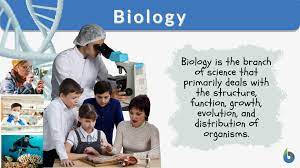Model organisms
All model organism is a species that has been widely studied, usually because it is easy to maintain and breed in a laboratory setting and has particular experimental advantages. Organisms that have been widely used for research so that a great deal is known about the biology. These organisms have properties that made them excellent research subjects.
The characteristics of model organisms are:
01 Relatively easy to grow and maintain in a restricted space.
02 Relatively short generation time (birth – reproduction – birth )
03 Relatively well understood growth and development
04 Relatively easy to provide necessary nutrients for growth.
05 Closely resemble other organisms or systems.
Different types of model organism
Genetic model Experimental model Genomic model
organisms organisms organisms
__________________________________________________________________
Good candidates Good candidates for Good candidates for
For genetic analysis research in developmental Genome research.
biology.
Breed in large Produce robust embryos Easy to manage genomes,
numbers. Have short manipulated that can be easily e.g. small genomes size
generation time, hence and studied . or limited number of
large scale crosses Example: Frog repeats. Genome is
can be followed over similar to a human
several generations, Example: Rat
01 01 Mammalian
models:
-Mouse ( Mus musculus)
-Rat (Rattus Norvegicus)
02 Non-mammalian models:
-Bacterium (Escherichia coli)
-Baker’s or brewer’s yeast (Saccharomyces cerevisiae)
-Nematode (Caenorhabditis elegans)
-Fruit fly (Drosophila melanogaster)
-Zebra fish (Danio rerio)
03 Plant model:
-Arabidopsis thaliana
E. coli.
It is a natural mammalian gut bacteria used as model organism because of its simplicity it has been the favoured organism for studying fundamental aspects of biochemistry and molecular biology. Most of our present concepts of molecular biology – DNA replication, genetic code, gene expression and protein synthesis come from the study of E. coli. Some reason to make E. coli model organism are:
01 E. coli is single-celled organism so it is simple to study.
02 Its life cycle is short.
03 It can easily grow on nutrient medium.
04 It can be easily manipulated.
Mouse (Mus Musculus)
The mouse has developed into the premier mammalian model system for genetic research. Scientists from a wide range of biomedical fields have gravitated to the mouse because of its close genetic and physiological similarities to humans, as well as the ease with which its genome can be manipulated and analyzed. Some of the reasons to make mouse as the model organism are:
01 There are small, maintained easily and have a short life span.
02 All new drugs, treatment are tried on mice.
03 Their genetics, biological characters resemble humans.
Fruit Fly (Drosophila melanogaster)
The fruit fly Drosophila melanogaster is a versatile model organism that has been used in biomedical research for over a century to study a broad range of phenomena. There are many technical advantages of using Drosophila over vertebrate:
01 Relationship between humans genes and fruit fly genes is close.
02 Seventy five percent of genes that cause human diseases are found in fruit fly.
03 They have a short life span (8-14) days.
04 These have a simple diet needing some carbohydrates and some proteins.
05 It is easy to manipulate genes in fruit fly.
Fig: Drosophila melanogaster
Yeast (Saccharomyces cerevisiae)
Yeast is one of the simplest eukaryotic organisms but many essential cellular processes are the same in yeast and humans. It is therefore an important organism to study to understand the basic molecular processes in humans.
Baker’s or budding yeast has long been a popular model organism for basic biological research because of the following reasons:
01 It is easy to manipulate in the lab.
02 Yeast can cope with a variety of environmental conditions.
03 Yeast show cell division in a similar way to our cells. In 1996, it was the first eukaryotic organism to have its genome sequenced.
04 Twenty percent of genes causing diseases are found in yeast.
05 Many drugs are tested on yeast which have functional equivalent of mutated human genes to reverse the disease.
Nematode (Caenorhabditis Elegans)
At approximately 1mmin length and transparent, the nematode worm might seem an unusual choice of animal to study in such detail. But this peculiar soil-swelling roundworm has proved itself to be a vital research tool. In fact, it is arguably the single most described animal in scientific literature because of the following reasons:
1 It can easily grow in labs on nutrient medium.
2 It produces over thousand eggs each day,
3 Worm is transparent so its cells can be easily studied.
4 Its development is found in complex organisms like humans, so it is easy to study nervous system of higher organisms
5 Its genes can be easily mutated.
6 Many genes have functional counterparts in humans so diseases can be easily studied.
A.thaliana (Arabidopsis thaliana)
A. thaliana is a small flowering plant that is widely used as a model organism in plant biology. Arabidopsis is a member of the mustard (Brassicaceae) family, which includes cultivated species such as cabbage and radish. Arabidopsis is not of major agronomic significance, but it offers important advantages for basic research in genetics and molecular biology. It is used as a model organism because of the following reasons:
1. It has a small genome (114.5Mb/125 Mb total) has been sequenced in the year 2000
2. It has a short life span of about six weeks.
3. It can be easily cultivated.
4. Mutations can be easily produced in this plant.





0 Comments